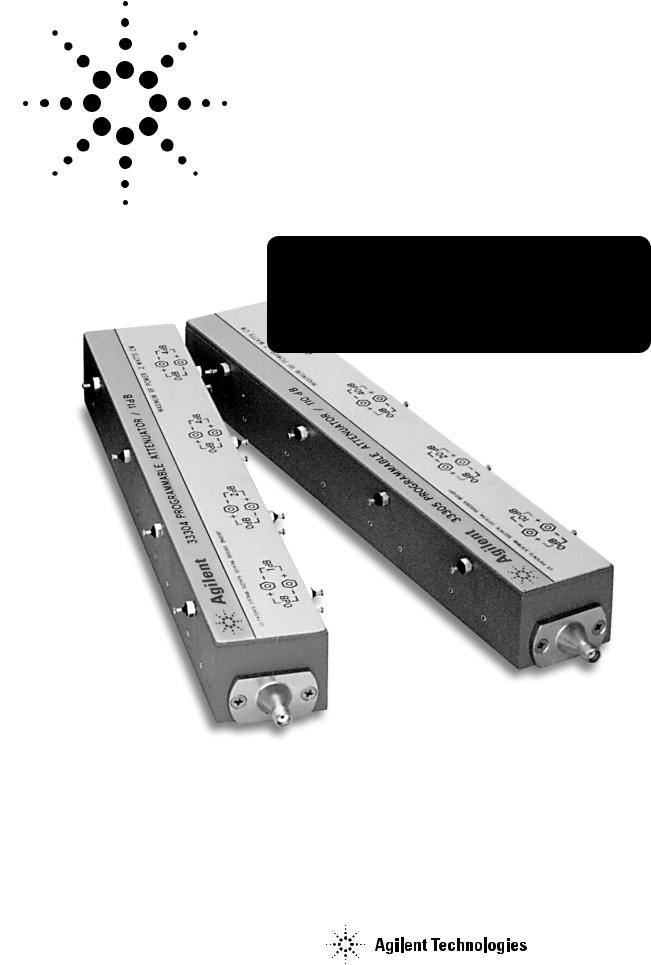HP 33304, 33305 schematic

Agilent 33304/5 Programmable
Step Attenuators
Data Sheet
Discontinued Product Information
— For Support Reference Only —
Information herein, may refer to products/services no longer supported. We regret any inconvenience caused by obsolete information. For the latest information on Agilent’s test and measurement products go to: www.agilent.com/find/products
In the US, call Agilent Technologies at 1-800-829-4444
(any weekday between 8am–5pm in any U.S. time zone)
World-wide Agilent sales office contact information is available at: www.agilent.com/find/contactus

Description
The 33300 Programmable Step Attenuators provide a fast and precise means for electrically controlling the level of signal attenuation in automatic test systems, receivers, and other RF equipment. They provide attenuation up
to 110 dB in 1 or 10 dB steps over a frequency range of dc to 18 GHz.
The products are defined as:
Model no. |
Total attenuation |
Step size |
|
dB |
dB |
33304 |
11 |
1 |
33305 |
110 |
10 |
The 33300 series attenuators utilize a unique operating principle. Magnetic latching solenoids are used to switch individual attenuation elements (tantalum resistive films on sapphire substrates) into and out of contact with a 50-ohm transmission line. Each unit is comprised of three or
four attenuation sections. By energizing the appropriate solenoid, any combination of these sections may be put across the 50-ohm transmission line to give the desired levels of attenuation.
The extreme stability of the sapphire tantalum attenuator pads, combined with the elimination of sliding contacts, gives rise to a product that has as number of important operational features. Among these are fast switching speed, excellent repeatability, compact size, long life, and high stability.
Magnetic latching solenoids move the transmission line into and out of contact with the sapphire attenuator elements. These solenoids are supplied with coils for 24-volt operation. The 24-volt coil can be run at up to 30 volts.
Because the solenoids are of the latching type, power need not be continuously maintained to keep the solenoid in either the in or the out position. It is sufficient to pulse the solenoid for 30 milliseconds at its rated voltage to change states. To change states the polarity across the terminals must be reversed. However, both terminals are “floating,” so either can
be grounded. Thus, unipolar power supplies are sufficient for controlling these units.
For switching speeds faster than 30 ms, this pulse voltage can be increased. A maximum of double the rated voltage may be put across the solenoids
in such cases, but pulse width should be limited to keep average solenoid power below 3.3 watts per section.
Indicator contacts, which allow the user to determine whether a given section is engaged or not, can be included. These contacts are in their open position when the appropriate attenuator cards are not engaged.
The contacts close, and remain closed, when the appropriate card moves into contact with the transmission line.
The 33300 series is available with any combination of 3 mm, 7 mm or Type N connectors. A three-digit code specifies these options. The first digit is always 0. The second digit calls out port 1, the third, port 2. See figure 2 for details.
2
